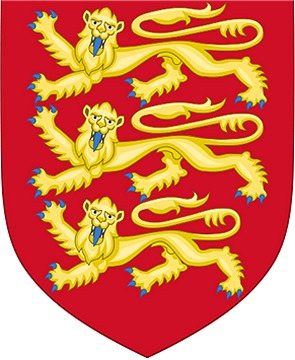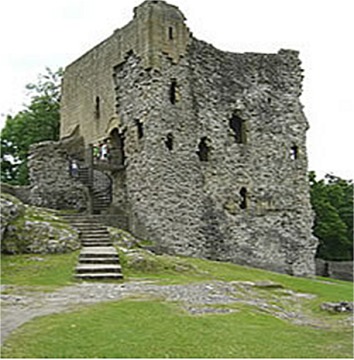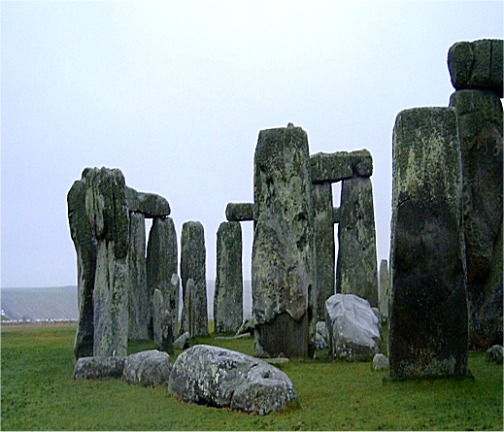
Official Edgar Rice Burroughs Tribute Site
Since 1996 ~ Over 15,000 Webpages in Archive
The Many Worlds of
presents
Issue 7648
The Outlaw of Torn: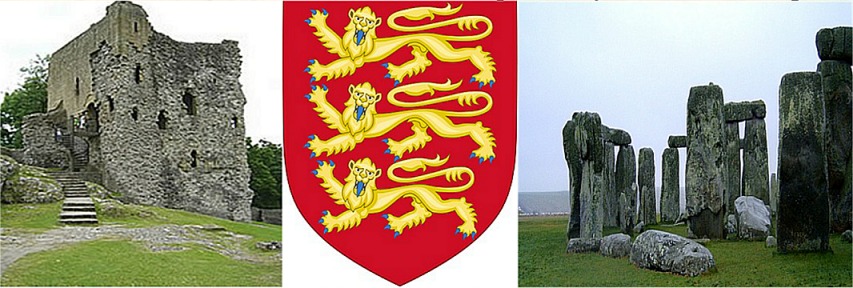
A Semi-Historical Perspective
by Robert Allen Lupton“The Outlaw of Torn” takes place during the period that England was ruled by the Plantagenet kings. From 1154 until 1485 Plantagenet monarchs ruled England. The initial branch ruled from Henry II of England until the deposition of Richard II of England in 1399. After that, a junior branch, the House of Lancaster, ruled for some fifty years, before fighting with the House of York, in a civil war known as the War(s) of the Roses. After three ruling Lancaster monarchs, the crown went to three York monarchs. The final Plantagenet ruler, Richard III, was killed in battle during 1485. Many illegitimate lines exist to this day, including the Dukes of Beaufort, who are now recognized as the last male line descendants of the Plantagenets.
Distinctive English culture and art emerged during the Plantagenet era. The Gothic architecture style was popular during the time and Westminster Abbey was remodeled in that style. There were also lasting developments in the social / political sector, such as King John’s signing of the Magna Carta. This was the foundation for the development of common and constitutional law. The Parliament of England and the Model Parliament began during the Plantagenet period, as did many educational institutions including the universities of Cambridge and Oxford.
During the Hundred Years' War, the Plantagenets battled with the House of Valois for control of the Kingdom of France. Some of the Plantagenet kings were renowned as warriors: Henry V, my favorite, left his mark with a famous victory against larger numbers at the Battle of Agincourt. “We few, we precious few...” Richard the Lionhearted distinguished himself in the Third Crusade. He was lionized, pun intended, in book, film and song.
“The Outlaw of Torn” takes place during the reign of Henry III. Henry III was the son and successor of John as King of England. He ruled for fifty-six years from 1216 to his death in 1272. His contemporaries knew him as Henry of Winchester. He was the first child king in England since the reign of Æthelred the Unready. Æthelred, ready or not, became king when his half brother Edward was murdered in 968. Æthelred was between 10 and 13 years old and is commonly assumed to have participated in the death of Edward.
England prospered during the reign of Edward III and his greatest monument is Westminster, which he made the seat of his government and where he expanded the Westminster Abbey as a shrine to Edward the Confessor.
Henry assumed the crown under the regency of William Marshal, 1st Earl of Pembroke. The England he inherited had undergone several drastic changes in the reign of his father, John. Henry, a weak willed king who made decisions about as often as the Cubs win a World Series, spent much of his reign fighting the barons over the Magna Carta and royal rights. He was eventually forced to convene the first "parliament" in 1264. He fared poorly on the Continent. His efforts to re-establish English control over Normandy, Anjou, and Aquitaine were not the least bit successful.
The battles between Henry III and his nobles provide most of the backdrop for the storyline in “The Outlaw of Torn”. The Henry in “The Outlaw of Torn” is a stronger and better man the Henry of history. First, Henry III was not a master swordsman as the novel reports. He was a scholar not a fighter. He would have not likely engaged in swordplay, real or otherwise, with a fencing master or anyone else. His indecisiveness was considered a weakness, real or imagined. In any event, he was bullied by Simon de Montfort and the nobles. He managed to retain rule through continual compromise and the gradual surrender of power to the nobles.
The tone and temper of the novel makes me want to side with the king rather than the nobles. History makes me believe that the nobles, led by Simon de Montfort were constantly frustrated by what they considered Henry’s poor leadership. History reports what history reports – so who knows the truth. We do know that they battled constantly. The English barons, led by Simon de Montfort, demanded more say in the running of the kingdom. French-born de Montfort had originally been one of the King's foreign counselors. Henry, was enraged over de Montfort’s behavior in a financial matter, and accused de Montfort of seducing his sister. He was further angered when forced to give her hand to de Montfort to avoid a scandal. When confronted by the Barons about the secret marriage that Henry had allowed to happen, a feud developed between the two. It’s always about money or women. De Montfort and his forces had captured most of southeastern England by 1263, and at the Battle of Lewes in May of 1264, King Henry was defeated and taken prisoner by de Montfort's army. Henry was reduced to being a figurehead king and de Montfort broadened political representation to include more than the nobility. Henry and his son, Edward, remained under house arrest. The period that followed was the closest England ever came to complete abolition of the monarchy until the Commonwealth period of 1649–60
Prince Edward had escaped in a little over a year. Actually, his cousin, Roger Mortimer, set him free. He led the royalists into battle, and whipped de Montfort at the Battle of Evesham in 1265. Following this victory, a swift and terrible retribution was exacted on the rebels.
Though not seen as the most tyrannical of kings, discontent was common during Henry's time. Robin Hood is traditionally thought of as belonging to the time of King John. However, the earliest Robin Hood sources and tales suggest that, if he existed at all, it was during Henry's reign. I considered doing this article about the similarities between Robin Hood and Norman of Torn. Rob from the rich, treat women with honor, protector of the common man and enemy of the crown. It is interesting that ERB would choose the era of Robin Hood to create a similar character and follow some similar themes. More on this later.
Burroughs uses some words and phrases that aren’t everyday words anymore. Well, at least they aren’t common words to me. I don’t recall anyone using zecchin or villosa in conversation today. They may not even have been everyday words when the novel was written.
ERB mentions the term “zecchin” A zecchin is any of various gold coins produced in Italy or Turkey. Shape, size and value varied from goldsmith to goldsmith. Purity was at the whim of the goldsmith, as was the size and shape of the coin.
There is villosa planted in the garden where the young son is playing. Villosa is a type of lilac
On page 26, ERB mentions, “Simnel Bread” a white bread, sold throughout the year.
Malmsey is also mentioned. Malmsey is a sweet fortified wine originally made in Greece and now produced mainly in Madeira. It has fallen into disfavor in recent years. It is mentioned in a new novel by Deborah Harkness, “A Discovery of Witches”
Choler is one of the four humors of ancient and medieval physiology, thought to cause anger and bad temper when present in excess; yellow bile.
Chapter five, one of the three knights that visit De Lac and Richard at their crumbling castle is named Greystoke. Nice. Prince Richard refers to Beauchamp as a “cochon”, a pig. When Greystoke and the old man join the battle making it two against three, the old man says “a mort, mon fils," or “to the death, my son”. However, I believe that the phrase “to the death” does come up in casual conversation today.I tried to determine where or what Castle Torn might be. Burroughs says that it once belonged to Henri de Macy. I can’t find any historical reference as to the existence of de Macy. Bolsover occupies the hilltop site of a medieval fortress built by the Peverel family. The imposing ruins of Peveril Castle stand high above the pretty village of Castleton in the heart of Derbyshire’s Peak District. Mentioned in the Domesday survey, Peveril Castle is one of England’s earliest Norman fortresses. The keep was built by Henry II in 1176. This castle is my choice for the Torn Castle.
On page 138,it is written that the great hall of the castle of Peter of Colfax, has had no change since the days of Æthelwulf, also spelled Aethelwulf or Ethelwulf; Old English: Æþelwulf, meaning 'Noble Wolf', was King of Wessex from 839 to 856. He is the only son who can indisputably be accredited to King Egbert of Wessex. He conquered the Kingdom of Kent on behalf of his father in 825, and was sometime later made King of Kent as a lesser-king to Egbert. He succeeded his father as King of Wessex on Egbert's death in 839 Historians give conflicting assessments of Æthelwulf. According to Richard Humble, Æthelwulf had a worrying style of Kingship. He had come to the throne of Wessex by inheritance. He proved to be intensely religious, cursed with little political sense, and with too many able and ambitious sons. Not unlike Henry III, except for the too many sons parts.
On page 244 Burroughs makes the statement that “Not since Arthur of Silures has so true a knight…” So who is Arthur of Silures? He could be the historical King Arthur. Dr Ray Howell’s latest area of research is the Silures, a warlike tribe of south Wales who put up a fierce resistance to the Roman invasion of Britain, yet remain an obscure bunch in the grand scheme of British history. Many believe that Arthur of Silures is the source of the Arthurian legends.
There was an Iron Age hill fort at Llanmelin near Caerwent that has sometimes been suggested as a pre-Roman tribal centre. Most archaeologists believe that the people who became known as the Silures were a loose network of groups with some shared cultural values, rather than an organized society. The origin of the name "Silures" itself has been described as "who the devil knows" Some would connect 'Silures' to the Common Celtic root *silo-, 'seed'. Words derived from this root in Celtic languages are used to mean 'blood-stock, descendants, lineage, offspring', as well as 'seed' in the vegetable sense. 'Silures' might therefore mean 'Kindred".
The Battle of Lewes was mentioned earlier in this article. On page 266 the “Outlaw of Torn” version of the Battle of Lewes begins. Historically, The Battle of Lewes was one of two main battles of the Second Barons' War It marked the high point of the career of Simon de Montfort, 6th Earl of Leicester, and made him the "uncrowned King of England".
The battle occurred because of the vacillation of King Henry III, who was refusing to honor the terms of the Provisions of Oxford, an agreement he had signed with his barons in 1258. The Pope actually gave Henry permission to ignore the Provisions of Oxford. It is always best when God is on your side, but it helps to have more soldiers and arms. The King was encamped at St. Pancras Priory with a force of infantry. His son, Prince Edward, aka King Edward I, commanded the cavalry at Lewes Castle 500 yards to the north. Marching all night march enabled Montfort's forces to surprise Prince Edward and take the high ground of the Sussex Downs, overlooking the town of Lewes, in preparation for battle. The royalist army is believed to twice the size of Montfort's. The royalists were by Edward on the right and the King's brother Richard of Cornwall on the left, while the King himself commanded the center. Edward led his men out from the castle to meet the enemy. Emboldened by early success, he unwisely pursued a retreating force to the north. This act destroyed the chance of overall victory.
Meanwhile, Montfort defeated the remainder of the royal army led by the King and Richard. On being defeated, Richard tried to hide in the Priory. He was unable to reach the Priory so he hid in a windmill, where he was captured. The King and Prince Edward were eventually captured. By imprisoning the King, Montfort became the de facto ruler of England.
The King was forced to sign the Mise of Lewes.The document has not survived (I expect one of the Plantagenets destroyed it after the Battle of Evesham.) It is clear that the King and kin agreed to accept the Provisions of Oxford, while Prince Edward remained hostage to the barons. This put Montfort in a position of ultimate power, which would last until Prince Edward's escape and Montfort's subsequent defeat at the Battle of Evesham in August 1265.
The historical Richard of Cornwall is not exactly a noble figure in the “Outlaw of Torn”. While not exactly a wonderful man, he actually achieved success, fame and fortune – most of it through bribery and extortion. He was, Richard of Cornwall, Count of Poitou, 1st Earl of Cornwall and German King, formally "King of the Romans". He was one of the wealthiest men in Europe. He also joined the Sixth Crusade. He was born on January 5, 1209 at Winchester Castle, the second son of King John. He came the High Sheriff of Berkshire at the age of only eight, was styled Count of Poitou from 1225. The King gave him Cornwall as a 16th birthday present. Richard's revenues from Cornwall provided him with most of his great wealth. Though he campaigned on King Henry's behalf in Poitou and Brittany, and served as Regent three times, relations were often strained between the brothers in the early years of Henry's reign. Richard, like de Montfort, thought Henry a weak imbecile. Richard rebelled against him three times, and had to be bought off with lavish gifts. As the second son of King John, he had to wait to be crowned as King. Richard opposed Simon de Montfort, and rose in rebellion in 1238 to protest against the marriage of his sister, Eleanor, to Simon. Once again he was placated with rich gifts.
After the birth of Prince Edward in 1239, provisions were made in case of the king's death, which excluded Richard. To keep him from becoming discontented King Henry and Queen Eleanor brought up the idea of a marriage with Eleanor's sister Sanchia. Richard and Sanchia, whom the English called Cynthia, were married at Westminster in November 1243.
The pope offered Richard the crown of Sicily, but according to Matthew Paris he responded to the extortionate price by saying, "You might as well say, 'I make you a present of the moon - step up to the sky and take it down'. Instead, his brother King Henry purchased the kingdom for his own son Edmund.
Although Richard was elected in 1256 as King of Germany by four of the seven German Electoral Princes (Cologne, Mainz, the Palatinate and Bohemia), his candidacy was opposed by Alfonso X of Castile who was elected by Saxony, Brandenburg and Trier. The pope and King Louis IX of France favored Alfonso, but both were ultimately convinced by the powerful relatives of Richard's sister in law, Eleanor of Provence, to support Richard. Ottokar II of Bohemia, who at first voted for Richard but later elected Alfonso, eventually agreed to support Richard, the Earl of Cornwall, thus establishing the required simple majority. So Richard only had to bribe four of them, but this came at a huge cost of 28,000 marks. On 27 May 1257 the archbishop of Cologne himself crowned Richard "King of the Romans" His title never held much significance, and he made only four brief visits to Germany between 1257 and 1269.
In December 1271, he had a stroke. His right side was paralyzed and he lost the ability to speak. On 2 April 1272, Richard died at Berkhamsted Castle in Hertfordshire. He was buried next to his second wife Sanchia of Provence and Henry of Almain, his son by his first wife, at Hailes Abbey. After his death, a power struggle ensued in Germany, which only ended in 1273 by the emergence of a new Roman King, Rudolph I of Habsburg, the first scion of a long lasting noble family to rule the empire. In Cornwall, Richard was succeeded by Edmund, son of his second wife Sanchia. It is probably best for England that this Richard never became king. His greed had no boundaries. He required bribes and payments for his support. He became rich through his constant promises and withdrawals of support. He battled his brother, he battled the nobles. Richard set the standard by which the success of mercenaries should be judged to this day.

Nine Quotes from the novel in no particular order:
"Virtue and Vice be twin sisters who come running to do the bidding of the same father, Desire. Were there no desire there would be no virtue, and because one man desires what another does not, who shall say whether the child of his desire be vice or virtue?
"The best sword arm in all Christendom needs no other logic than the sword, I should think.” I think that means "might makes right." Where is Arthur when we need him?
On Page 96, Norman says, “I do not know why I should have hated them so before I was old enough to know how rotten they really are”.
"One can never tell," said Roger de Condon on page 162 "what manner of fool a man may be. When a man's head be filled with a face, what room be there for reason?”From page 172 “I say what is in my mind or I say nothing.”
On page 184,”Between priest and petticoat, it be all but ruined now”. (Sounds like the US House of Representatives)
Quote from page 249 "For my part" laughed the outlaw, "I be willing to leave it in His hands; which seems to be the way with Christians. When one would shirk a responsibility, or explain an error, lo, one shoulders it upon the Lord."
Of course, this novel has to have an obligatory “prodigal son” quotation and reference and Burroughs doesn’t disappoint us.
On page 319, “And it is ever thus; whether in hovel or palace; in the days Moses, or in the days that be ours; the lamb that has been lost and is found again be always the best beloved.”A must revisit the Robin Hood connection. After young Norman defends Father Claude from the Black Wolf and his ruffians, Norman requires the ruffians to swear to follow him. When the bandits ask what their duties will be, Norman replies, “"To follow Norman of Torn where he may lead, to protect the poor and the weak, to lay down your lives in defense of woman, and to prey upon rich Englishmen and harass the King of England."
Just a page or so later, Burroughs writes, “Through all the length and breadth of the country that witnessed his activities, his very name was worshipped by poor and lowly and oppressed. The money he took from the King's tax gatherers, he returned to the miserable peasants of the district.”
This sounds a lot like Robin Hood to me. Robbing the rich and giving to the poor. Think about it. We have Father Claude instead of Friar Tuck. We have Red Shanty instead of Little John. We don’t have the Merry Men, but we have bad of outlaws who follow him and observe the same “code of honor” that Norman of Torn has learned from du Vac and Father Claude. The Robin Hood mythos is usually associated with King Richard and King John – who predated Henry III by less than a century. Most of the narrative ballads about Robin Hood are from the 15th century. It is only in these later stories that the Robin Hood legend was specifically identified with the time of King Richard. Is it possible that the Robin Hood legend sprang from the suppression of the story of the little lost prince? Could our view looking back through the dim and torch lit fog covered centuries obscured the fact that Norman of Torn and Robin Hood are two tales descended from the same reality. Did the cover up of the legend of the outlaw prince cause the bards of the time to change the story, because it is too good a story to pass up? Four to five centuries later, when the Robin Hood legend became more prescribed in the basics of the legend, is plenty of time for the tale to change. The fundamental principles of the sage remain. Honor, respect, rights of the common man, “rob the rich and give to the poor”, stand up for what you believe in are lessons that remain steadfast in both Burroughs and in the tales of Robin Hood. As they used to say on the Dragnet television show, “the names have been changed to protect the innocent.” I will stop here without going off on a Farmerian quest to tie Robin Hood and Norman to each other by blood or even to demonstrate that Norman of Torn morphed into Robin Hood after the events in the story here were concluded. While I have the imagination to explore this storyline, I do not have the energy or the time.
It is likely that Burroughs had read the Robin Hood tales and incorporated the very similarities that I reference into the “Outlaw of Torn” deliberately. I expect that is the case.
It is interesting to consider that what I consider the two primary legends from medieval England, Robin Hood and King Arthur contain many of the same messages. Both legends have to do with honor, fair governance, rights of the commoner. I expect that Burroughs chose to incorporate these elements from the Arthurian and Robin Hood mythos into the Outlaw of Torn storyline. The inclusion of these elements makes the Burroughs storyline fit like a side by side along with the traditional English legends. Burroughs use of historical characters sets the stage. Burroughs use of traditional English themes of chivalry, honor, civil unrest, and resistance to bad governance validate the expectations of the reader. The reader expects the British kings and nobles to behave like Burroughs has them behave. The reader expects the outcast hero to be a man of honor who resists the evil trappings that come with power. The reader expects a man of honor, who embraces what is fair and equitable, but without any weakness or character. Strength in defense of what is right, unending pursuit of what is not.
I include the photo of Stonehenge because no visit to England would be complete without it:

Read the e-Text Edition HERE
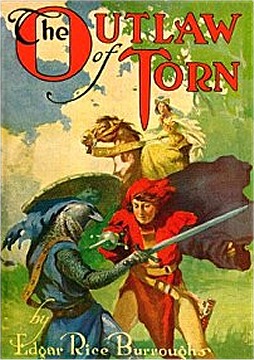
www.erbzine.com/mag7/0754.html

BILL HILLMAN
Visit our thousands of other sites at:
BILL and SUE-ON HILLMAN ECLECTIC STUDIO
ERB Text, ERB Images and Tarzan® are ©Edgar Rice Burroughs, Inc.- All Rights Reserved.
All Original Work ©1996-2022 by Bill Hillman and/or Contributing Authors/Owners
No part of this web site may be reproduced without permission from the respective owners.
